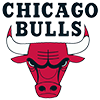When preparing for your fantasy basketball draft, knowing every detail of your league's settings is important. Depending on the scoring format, some players could have drastically different values. Let's dive into points leagues to discuss draft strategies and some appealing players to target.
Points League Draft Strategy
One of the biggest differences between points leagues compared to standard category leagues is we don't have to worry about a player's field-goal or free-throw percentage. In a points league, players receive an assigned fantasy point value for every statistic they record. For example, many points leagues will give a player 1.0 fantasy points for every actual point they score in a game, 1.2 points per rebound, 1.5 points per assist, 2.0 points per steal and 2.0 points block. There may also be negative points assigned to turnovers.
In category leagues, players with poor efficiency statistics can drag down fantasy managers. A good example of a player who holds more value in points leagues than standard category leagues is Giannis Antetokounmpo. His counting stats are usually off the charts. Last season, he averaged 30.4 points, 11.5 rebounds, 6.5 assists, 1.2 steals and 1.1 blocks per game. He has averaged at least 27.7 points, 11.0 rebounds, 5.6 assists and 1.0 blocks in each of the last six seasons.
The downside with Giannis in category leagues is he does not shoot well from the charity stripe. He hit only 65.7 percent of his free-throw attempts last season and has converted no more than
When preparing for your fantasy basketball draft, knowing every detail of your league's settings is important. Depending on the scoring format, some players could have drastically different values. Let's dive into points leagues to discuss draft strategies and some appealing players to target.
Points League Draft Strategy
One of the biggest differences between points leagues compared to standard category leagues is we don't have to worry about a player's field-goal or free-throw percentage. In a points league, players receive an assigned fantasy point value for every statistic they record. For example, many points leagues will give a player 1.0 fantasy points for every actual point they score in a game, 1.2 points per rebound, 1.5 points per assist, 2.0 points per steal and 2.0 points block. There may also be negative points assigned to turnovers.
In category leagues, players with poor efficiency statistics can drag down fantasy managers. A good example of a player who holds more value in points leagues than standard category leagues is Giannis Antetokounmpo. His counting stats are usually off the charts. Last season, he averaged 30.4 points, 11.5 rebounds, 6.5 assists, 1.2 steals and 1.1 blocks per game. He has averaged at least 27.7 points, 11.0 rebounds, 5.6 assists and 1.0 blocks in each of the last six seasons.
The downside with Giannis in category leagues is he does not shoot well from the charity stripe. He hit only 65.7 percent of his free-throw attempts last season and has converted no more than 68.5 percent of his attempts in four of the last five seasons. What really drags him down in that department is that he has averaged at least 10.0 free-throw attempts in four of the last five seasons. That type of volume at such a poor efficiency rate can make Giannis difficult to build around in category leagues. However, since that doesn't matter in points leagues, Giannis should be one of the top options to consider drafting in the first round.
Another category that doesn't usually come into play in points leagues is three-pointers made. In category leagues, players who hit three-pointers have added value because they provide three points for every triple they make, plus each three-pointer is usually tallied in its own category, as well. Most points leagues only count the three points, so players who don't drain a lot of three-pointers aren't as negatively impacted.
When drafting players in points leagues, look at their raw counting stats. More efficient players tend to score more points, but as long as a player has a high usage rate, they should still score enough to provide plenty of value, on top of whatever they produce in other categories.
Players To Target
Domantas Sabonis, Sacramento Kings
Sabonis shot only 70.4 percent from the free-throw line last year and has a career mark of 72.6 percent. He has never averaged more than 0.8 three-pointers per game for a season. However, he can provide elite counting stats. He has averaged at least 18.5 points, 12.0 rebounds and 5.0 assists in each of the last five seasons. Last year, he provided 19.4 points, 13.7 rebounds and 8.2 assists per game. The addition of DeMar DeRozan could negatively impact Sabonis' usage rate, but not enough to cause a significant difference in the latter's value. Sabonis should be selected in the first round of points leagues.
LaMelo Ball, Charlotte Hornets
Ball has never shot higher than 43.6 percent from the field in a season during his career. Given his career 28.8 percent usage rate, his lack of efficiency is especially troublesome for fantasy managers in category leagues. However, that not being a factor in points leagues gives Ball a significant boost in value. When he has been healthy, he has continued to produce gaudy counting stats. Across 22 games last season, Ball averaged 23.9 points, 5.1 rebounds, 8.0 assists and 1.8 steals. The Hornets return largely the same roster as last season, so Ball should remain in his leading role.
Fred VanVleet, Houston Rockets
VanVleet struggled with his efficiency again last season, shooting 41.6 percent from the field. The scary part is, that was actually the second-highest mark of his career. During his eight seasons in the league, he has shot 41.0 percent or lower five times.
In points leagues, VanVleet provided added value last season with his averages of 17.4 points, 3.8 rebounds, 8.1 assists and 1.4 steals per game. He has averaged at least 17.4 points, 3.8 rebounds, 6.3 assists and 1.4 steals in each of the last five seasons. The Rockets continued to add to their young depth by drafting Reed Sheppard, but VanVleet is still locked into the starting point guard job and a ton of playing time. Last season, VanVleet logged 37 minutes per game.
Josh Giddey, Chicago Bulls
Giddey actually improved his value in category leagues last season by shooting 80.6 percent from the free-throw line. Before that, he had shot 70.9 percent and 73.1 percent from the charity stripe in his first two seasons in the league. He continues to underwhelm from behind the arc, though, averaging exactly 1.0 three-pointers in each of his three seasons.
Now a member of the Bulls, Giddey could be unleashed in points leagues this season. While his playing time took a hit last season, he averaged 16.6 points, 7.9 rebounds and 6.2 assists in 31 minutes per game for the Thunder two seasons ago. As one of the building blocks for the Bulls, Giddey could sail past 30 minutes per game again. Don't be surprised if he sets career highs in points and assists per game. He should have the ball in his hands a lot.
Scoot Henderson, Portland Trail Blazers
It was a rough rookie season for Henderson, who shot only 38.5 percent from the field. He did play better down the stretch, averaging 18.9 points, 3.6 rebounds, 7.9 assists and 1.4 steals across his final 14 games. However, he still shot just 40.8 percent from the field during that span.
The Trail Blazers added Deni Avdija during the offseason, but their guard depth still leaves a lot to be desired. Anfernee Simons has also been injury-prone, appearing in 62 games or fewer in each of the last three seasons. There is a path for Henderson to play a lot, which makes him someone to target in the middle rounds of points league drafts.






































